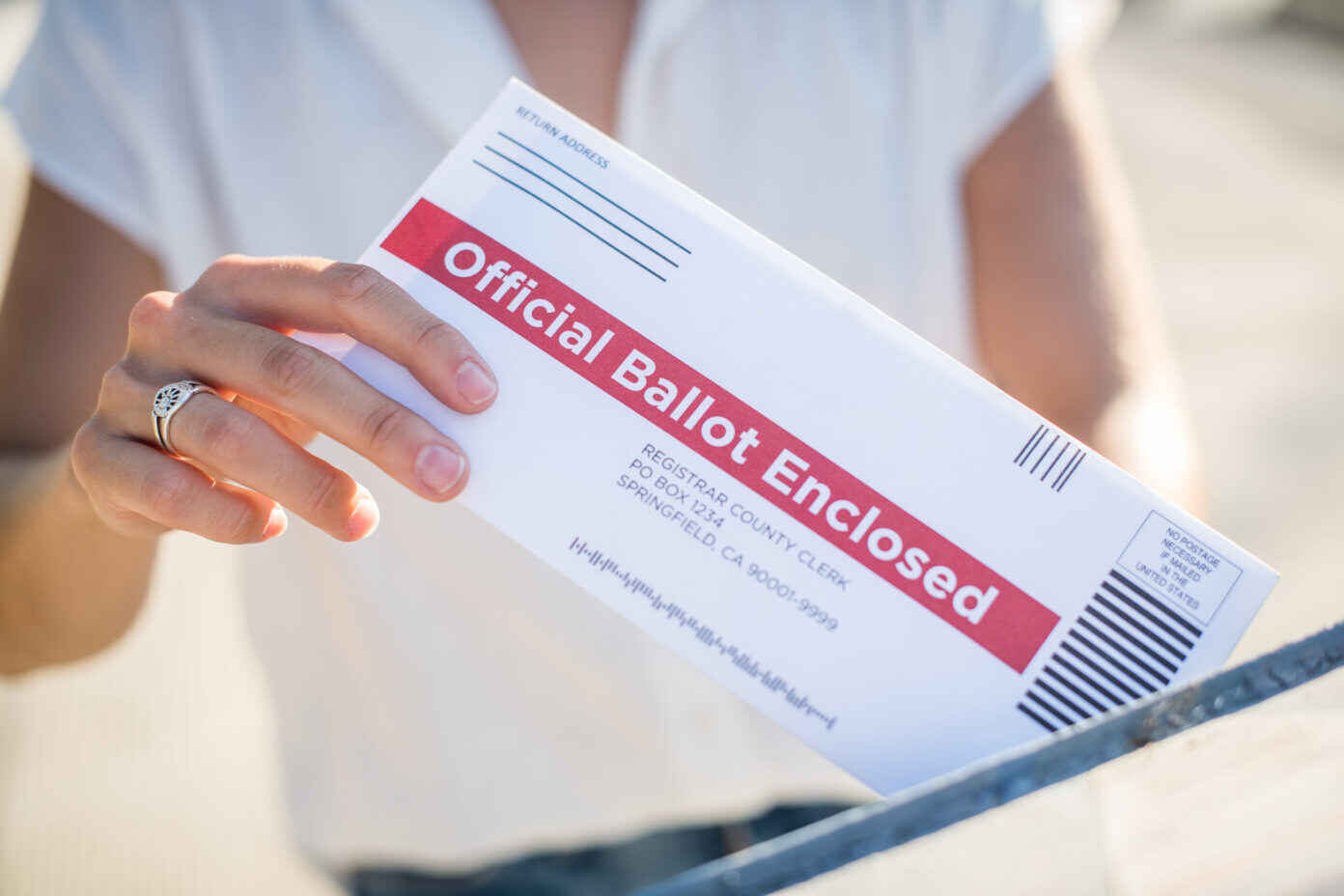Q&A: Tracking How Voting Impacts Health
November 17, 2021
Overview
Voting impacts public health policies ranging from healthcare access to gun control and LGBTQ rights. In this Q&A, Network Southeastern Region Office Director Dawn Hunter discusses the newly launched Health & Democracy Index and her work in tracking the connection between voting laws and health outcomes.

What is the relationship between voting and health?
Voting affects the adoption or rejection of policies that impact individual and community health, and those policies then shape who is more likely to vote and continue to do so across their life span. We know from existing research that people who have lower self-rated health, certain chronic diseases, poor mental health, or who live with disabilities all experience lower voter turnout and greater barriers to ballot access. This is also true for people with lower levels of education and income. We also know that voter turnout varies by race and ethnicity, and that people of color have historically had lower voter turnout.
Elections reflect the interests and needs of the people who are able to cast a ballot, so that means they may more heavily reflect a population that is healthier, wealthier, more educated, and less diverse. These disparities in voting lead to less inclusive health policy that reinforces health disparities, which then reinforce voting disparities. We know some possible explanations for why this connection exists, including the role of social capital and neighborhood safety and cohesion, but more research is needed on the causal relationship. What we know now is that there is a strong correlation between health and voting, which we wanted to illustrate with the Health & Democracy Index.
What is the Health & Democracy Index?
The Health & Democracy Index is a project of Healthy Democracy Healthy People, a nonpartisan coalition of public health and civic engagement groups, including the Network, working to advance civic participation and public health. Through interactive plots, the Index shows measures of health status relative to the Cost of Voting Index (COVI) for each state. The COVI was first published in 2016 as an analysis of the relative cost of voting in presidential election cycles from 1996-2016. The cost of voting refers to the time and effort associated with voting and is intended to characterize the overall electoral climate in each state or, in other words, the extent to which each state embraces inclusivity in the electoral process versus restriction or exclusion. It looks at nine key components in each state across two categories – registering to vote and casting a ballot.
The measures of health status included in the Index were identified through a literature review and refined through ongoing research and stakeholder engagement. The Index includes measures related to individual and population health and other population characteristics, including self-rated health, premature mortality, infant mortality, poverty rates, and community and family safety. In addition to the health measures, four specific categories of voting laws and policies that can either support or hinder inclusive civic participation are highlighted in the Index, including registration options (automatic, same day, and Election Day registration), vote at home options (like all mail elections and no-excuse absentee voting, which was important for the 2020 election cycle), voter ID requirements, and voting rights restoration for people with felony convictions (I’ve written about this and the connection to health here).
The Index is a tool that illustrates the connection between voting access and health outcomes and the bottom line is that states with more inclusive voting policies and greater levels of civic participation are healthier. We believe the Indexcan serve as a crucial tool in our work to strengthen civic participation by expanding the public understanding of the critical connections between robust, inclusive democratic practices and healthy, resilient communities.
What are some legal and policy strategies to ensure access to the ballot and improve population health?
One key strategy to improve civic participation and health is through voter registration via Medicaid agencies. Many people have heard of the “Motor Voter” Law or live in a state where they are registered to vote through their state’s department of motor vehicles. While this has been a successful way to register voters, many eligible voters who experience barriers to access are missed. Medicaid offices are already required under the National Voter Registration Act to offer voter registration forms and assistance, and they would provide an ideal way to offer automatic voter registration given the existing application and verification of eligibility process. This matters because Medicaid offices can reach people not reached by motor vehicle agencies—people who are older, who are low-income, or who move often. Medicaid covers more than 20 percent of the U.S. population. More than 60 percent of enrollees are people of color, and more than 15 percent are people with disabilities, so there is the potential for a significant impact on both voting disparities and health disparities by implementing Medicaid-based automatic voter registration.
However, civic engagement is more than voting—it is also volunteering, engaging in community activities, and participating in other forms of political expression. These are things that can build social cohesion and feelings of belonging and inclusion. These other activities can be supported by improving civic infrastructure, and that means addressing barriers to participation like transportation, neighborhood safety, and access to public buildings; leveraging existing laws and mechanisms to support participation (like the Medicaid example above); and improving civic education and tools that support voter education and engagement. We can also ensure that people can participate in local policymaking through opportunities for public comment and participation in public meetings (like city council); representation on policymaking bodies and advisory boards in local communities; and implementing processes like participatory budgeting and citizen scientist programs.
Strengthening these other forms of civic participation is also important and is part of a series of recommendations in the Network’s Law and Policy Pathways to Civic Engagement. Importantly, we have to recognize that civic engagement is a year-round activity, and we must hold elected leaders accountable for their action or inaction, and we can do that through the ballot box. When we vote, we have the power to create a path to better health.
The Network for Public Health Law provides information and education about laws related to the public’s health. We do not provide legal representation or provide advice on a particular course of action.



